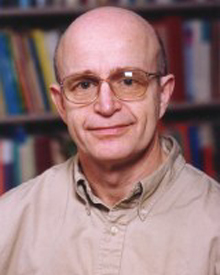非常抱歉,
你要访问的页面不存在,
非常抱歉,
你要访问的页面不存在,
非常抱歉,
你要访问的页面不存在,
验证码:

职称:Professor
所属学校:Carnegie Mellon University
所属院系:Psychology
所属专业:Psychology, General
联系方式:412-268-2788
The goal of my research is to understand the structure of higher-level cognition with a particular focus on mathematical problem solving. This has led us to focus on what are called "unified theories of cognition." A unified theory is a cognitive architecture that can perform in detail a full range of cognitive tasks. Our theory is called ACT-R and takes the form of a computer simulation which is capable of performing and learning from the same tasks that subjects in our laboratories work at. ?We develop cognitive models for various tasks of interest constrained by the overall architecture Our current work has focused on analyzing brain imaging data to test cognitive models and to guide their development. In particular, we have been interested in parsing the time course of brain imaging data to get information about what is happening "under the hood" as people perform a complex task. This information is being used to help design instruction that will enable students extend their knowledge beyond the procedures that are taught.
The goal of my research is to understand the structure of higher-level cognition with a particular focus on mathematical problem solving. This has led us to focus on what are called "unified theories of cognition." A unified theory is a cognitive architecture that can perform in detail a full range of cognitive tasks. Our theory is called ACT-R and takes the form of a computer simulation which is capable of performing and learning from the same tasks that subjects in our laboratories work at. ?We develop cognitive models for various tasks of interest constrained by the overall architecture Our current work has focused on analyzing brain imaging data to test cognitive models and to guide their development. In particular, we have been interested in parsing the time course of brain imaging data to get information about what is happening "under the hood" as people perform a complex task. This information is being used to help design instruction that will enable students extend their knowledge beyond the procedures that are taught